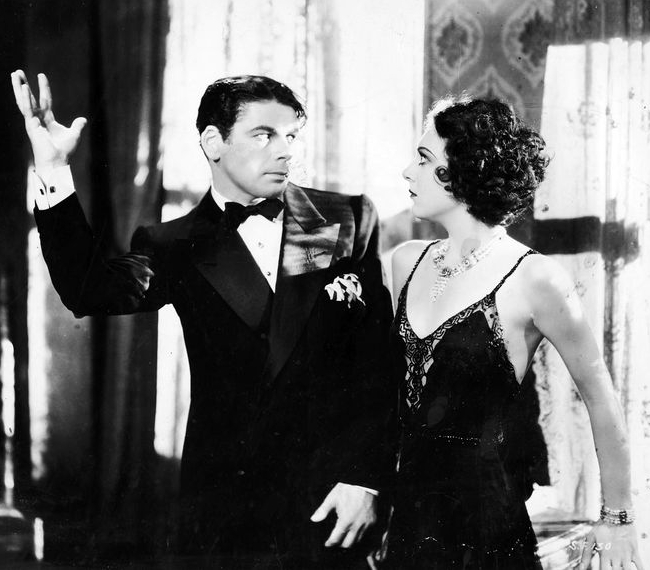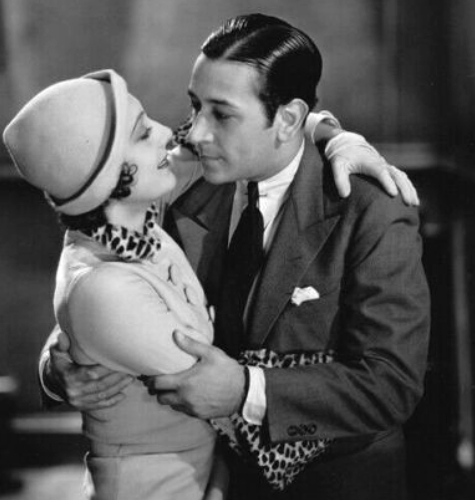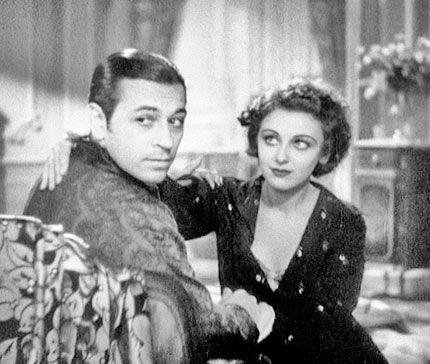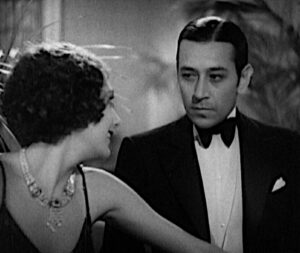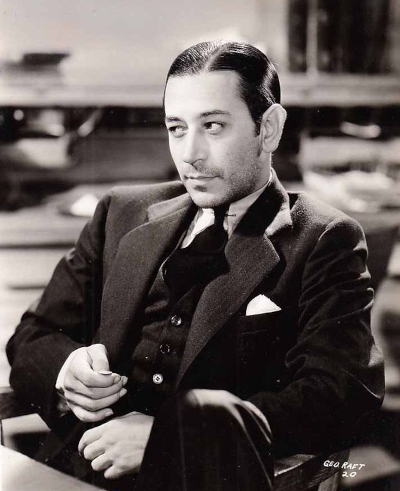Scarface was released April 9,1932 but filmed in 1931 during pre-code days and consequently experienced some significant difficulties in getting shown. Despite that, it received rave reviews from critics and broke box office records. Audiences fell for George. It has been said that had there been a supporting actor category for 1932, George would have won.
Paul Muni plays, Tony “Scarface” Camonte, a hood on his way up, a villain whose psychopathic narcissism made him a danger to all. George plays his bodyguard Guino Rinaldi with menace and style. In his steely look and capable hand, the coin-flipping gangster was born. Ann Dvorak plays Cesca Camonte, Tony’s sister, for whom he has an incestuous affection and over whom he exercises a controlling grip. Disaster looms for the three. Despite frequent gun battles, Tony survives and schemes his way to the top of the criminal element with Guino protecting his back. Given the violence of the film, the ending is fitting if not clever for its twists and turns. Crime does not pay and the censors ensured that was graphically depicted.
Howard Hawks was the perfect director for this stunning crime drama with its use of riveting action sequences, shadowy figures and off-screen violence. Sharpshooters were employed to make the gunfire realistic and enhance scenes like exploding windows in a café, dynamic and exciting. Of his more than fifty films including Bringing Up Baby, Sergeant York, To Have and Have Not, The Big Sleep, and Gentlemen Prefer Blondes, Scarface was his favorite.
According to Lewis Yablonsky in his book, “George Raft”, Hawks said, “George had a certain unique look and he kept it in most of his movies. He was smart enough to keep what he had. It worked for him. When you are a personality like George, the camera does something for you. The camera likes some people, and it liked George. I saw many of Raft’s films. Even without lines, he wouldn’t do a goddam thing sometimes except think something on camera, and his motivation would show up on film. The audience would learn from that look what he was thinking and what he was going to do about it.”
The Picturegoer’s Who’s Who (1933), pronounced George “an artiste of unusual ability and of distinctive type.” They also mentioned his final scene in Scarface which was hailed as remarkable by many reviewers. High praise for a man who raised himself on the mean streets of Hell’s Kitchen, New York, and was just looking for a way to make a living.
An enthusiastic public mobbed his promotional appearances at several theatres and George rewarded them with a few words and dance steps to acknowledge their appreciation. Can you imagine the thrill at the end of a showing when the real, live George mounted the stage? This was at the height of the Depression when for many people movie tickets were an extravagance. George made it worth that price and then some.
Scarface is available from the Movies section of his homepage. In 1980, Al Pacino saw the film in a theatre and went on to star in the 1983 remake. I prefer the original. How about you?


